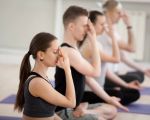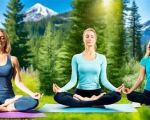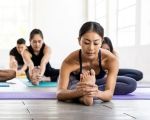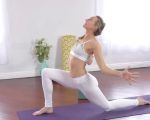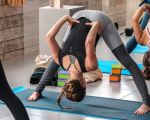- 1-the-relationship-between-yoga-and-body-strength
- 2-key-yoga-poses-that-build-strength
- 3-how-yoga-engages-multiple-muscle-groups
- 4-mindfulness-and-breathing-in-strength-development
- 5-real-life-examples-of-strength-improvement-through-yoga
- 6-enhancing-your-strength-practice-with-free-yoga-links
1. The Relationship Between Yoga and Overall Body Strength
Yoga is often celebrated for flexibility and relaxation, but its role in improving overall body strength is equally profound. Unlike conventional weightlifting, yoga uses body weight and dynamic poses to develop muscular endurance, balance, and functional strength. This approach encourages sustainable strength gains without the risk of injury commonly associated with heavy lifting.
Scientific studies have shown that regular yoga practice increases muscle tone and strength by stimulating both slow-twitch and fast-twitch muscle fibers. Additionally, yoga’s emphasis on controlled movements and posture correction helps build core strength, which is vital for overall body stability. The gradual progression in yoga intensity also supports long-term muscle development.
2. Key Yoga Poses That Effectively Build Full Body Strength
Certain yoga poses are particularly effective for strength development because they require sustained muscle engagement and balance. Poses such as Plank, Warrior II, Chair Pose, and Crow Pose activate multiple muscle groups simultaneously, making them ideal for beginners and advanced practitioners alike.
For example, the Plank pose is a powerful full-body strengthener targeting the arms, shoulders, core, and legs. Holding this pose challenges endurance and stabilizes the muscles that support everyday movements. Similarly, Warrior II strengthens the legs, hips, and back, promoting balance and stamina.
Incorporating these poses into a regular routine can transform muscular strength and enhance body control. As you progress, transitioning into arm balances or inversions can further elevate your strength capabilities.
3. How Yoga Engages Multiple Muscle Groups for Balanced Strength
Yoga’s unique advantage lies in its ability to engage multiple muscle groups through compound movements that mimic real-life physical demands. Unlike isolated exercises, yoga poses create synergy between muscles, enhancing coordination and reducing imbalances.
For instance, a pose like the Boat Pose simultaneously works the abdominals, hip flexors, and lower back muscles, promoting core stability and strength. This multi-muscle engagement not only improves physical performance but also supports injury prevention by balancing muscular development across the body.
This holistic strengthening effect is why yoga is recommended by physical therapists and trainers as a complementary practice to traditional strength training methods.
4. The Role of Mindfulness and Breathing in Enhancing Strength Through Yoga
Beyond physical postures, yoga’s emphasis on mindfulness and controlled breathing significantly contributes to strength gains. Breath control, or pranayama, helps oxygenate muscles and improve endurance during demanding poses. Mindfulness encourages proper alignment and body awareness, reducing compensatory movements that weaken strength development.
Practitioners who integrate mindful breathing with their poses report enhanced focus and the ability to hold challenging postures longer, thus increasing muscle engagement. This mental-physical connection fosters a deeper, more effective strength-building experience than conventional workouts.
5. Real-Life Examples of Strength Improvement Through Yoga Practice
Numerous yoga practitioners have shared transformative stories about how yoga improved their overall body strength. One inspiring example is that of Jessica, a former runner who struggled with muscle imbalances and injuries. After adopting a consistent yoga practice focused on strength-building poses, she regained muscular balance, improved her core stability, and eliminated chronic pain.
Another case involves a middle-aged man who credited yoga for increasing his upper body strength, which helped him perform daily tasks with greater ease and reduced fatigue. These stories highlight yoga’s accessibility and effectiveness for people across different fitness levels and ages.
Such experiences are echoed widely in online communities and underscore the potential of yoga to serve as a comprehensive strength training approach.
6. Enhancing Your Strength Practice with Resources from Free Yoga Links
To deepen your understanding and practice of how yoga improves overall body strength, leveraging expert resources is invaluable. Free Yoga Links offers a curated selection of tutorials, classes, and product recommendations tailored to strength-focused yoga. Whether you are a beginner or an experienced yogi, their guides help you select the best equipment, supplements, and instructional content to support your goals.
Using these trusted resources can accelerate your progress and keep your practice enjoyable and effective. With Free Yoga Links, you gain access to personalized recommendations that cater to your individual needs, making your yoga journey both rewarding and sustainable.

